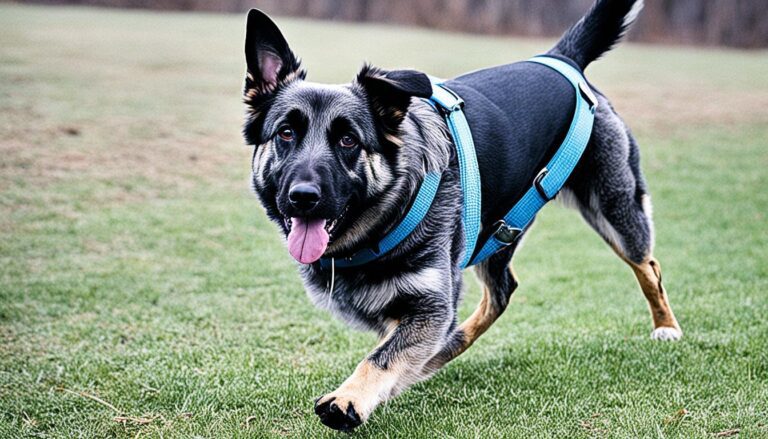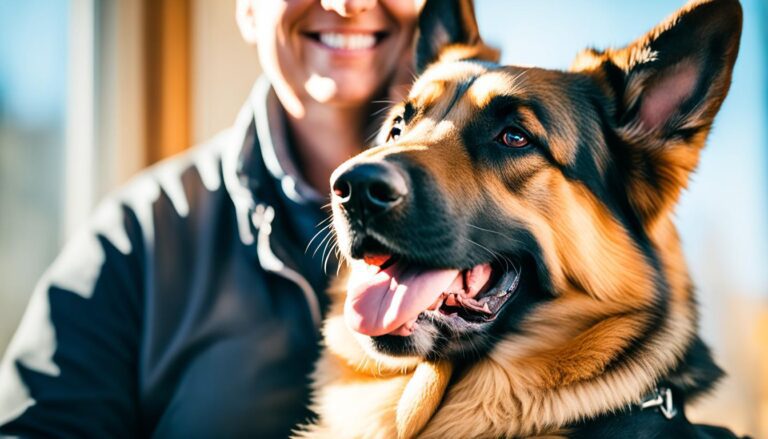House training puppies – Training puppies to be housebroken.
Is your new puppy making messes in the house? You’re not the only one dealing with this. Teaching your puppy to be well-behaved inside takes time and effort. It’s about being patient, fully committed, and staying consistent. By following a few simple steps, you can help your puppy learn the right way of doing things. This is super important. It means they’ll know not to make a mess all over your home.
So, what’s the secret to training your puppy housetraining, puppy potty training, and housebreaking puppies successfully? It’s all about setting a solid schedule and going out with your puppy often. Plus, giving them treats when they go outside, managing when and where they go, and making the most out of using a crate. But before getting into these tips, let’s think about something. Why is it so hard to train a puppy to not go inside the house?
Key Takeaways
- House training requires patience, commitment, and consistency from pet owners.
- Proper house training teaches puppies appropriate places to eliminate, preventing damage to the home.
- Establishing a consistent routine, taking the puppy out frequently, and rewarding outdoor elimination are key to success.
- Controlling the puppy’s diet and feeding schedule, as well as using crate training effectively, can also aid in the house training process.
- Understanding your puppy’s bathroom habits and signals is crucial for preventing accidents and guiding them towards appropriate elimination behaviors.
Establishing a Routine for Successful Housetraining
Puppies learn best on a routine. This helps them know when it’s time to eat, play, and use the bathroom. A 2-month-old puppy should go outside every 2 hours. They should go out in the morning, after meals, play, and before bed.
Setting a Schedule for Frequent Bathroom Breaks
Take them outside to the same spot each time. Use a cue word, like “go potty”, to help them understand. A very young puppy may need to go outside more than a dozen times a day due to their small bladders.
Using a Designated Bathroom Spot Outside
Choose a specific spot outside for your puppy to use the bathroom. Make sure you always take them to this spot. Use the same cue word every time, like “go potty”. This will teach them to go in the right place.
Rewarding and Praising Outdoor Elimination
When your puppy goes to the bathroom outside, give them praise and rewards. This shows them they did something good. Following a routine and taking them out often are crucial to succeed in housetraining.

House Training Puppies – Training Puppies to Be Housebroken
Understanding Your Puppy’s Bladder Control
Puppies have small bladders and are still learning. Knowing this, learning about puppy bladder control is key. A general rule is, for each month of age, a puppy can wait for about an hour before needing to go out. For example, a 2-month-old pup needs a bathroom break every 2 hours. Meanwhile, a 6-month-old can wait a bit longer, up to 6 hours.
Monitoring Your Puppy’s Signals and Habits
Puppies tell us they need to go by using several puppy potty training signals. These can include sniffing, circling, or squatting. By watching and understanding your puppy’s habits, you can catch these signals. This helps prevent accidents. You might need to take them outside many times each day to get the hang of their patterns.
Controlling Your Puppy’s Diet and Feeding Schedule
How and when you feed your puppy is vital for their housetraining. It directly affects their poop and pee times. Puppies should eat three times a day since their stomachs are still developing. It’s also important to watch what and when they drink. A consistent high-quality diet combined with a set feeding schedule helps keep their potty routine regular.
During housetraining, keeping a close eye on your puppy is important. This, along with offering them frequent chances to go outside, helps avoid messes in the house. By knowing when and how to feed, and recognizing bathroom signs, you’re on a good path to housetraining success.
Crate Training: A Powerful Tool for Housebreaking
Our practice shows that crate training is a top method for teaching puppies to be clean in the house. Dogs are like den animals and feel safe in small, enclosed spaces. A properly sized crate is essential. It should allow the puppy to move but not be too big. This taps into a dog’s instinct to stay away from their own mess. Puppies learn to wait to be let out and enjoy potty breaks more often when in a crate.
Crates help puppies show clear signs if they need to go outside. At first, some puppies might not like being inside a crate. But, with gentle training and rewards, they start to view it as their cozy spot. We have seen a big difference in puppies that learn in a crate. They are less messy and learn to be completely trained in about six months.
Choosing the right crate is important, whether it’s wire, plastic, or soft-sided. It must be the correct size and have room to adjust as your puppy gets bigger. With the help of a good crate, a solid schedule, and many outdoor trips, your puppy can learn faster. This not only keeps your house tidy but also makes sure your puppy feels safe.
FAQ
What is house training, and why is it essential for puppies?
What are the key aspects of successful house training for puppies?
How often should a puppy be taken out for bathroom breaks?
When should a puppy be taken out for bathroom breaks?
How important is rewarding outdoor elimination during house training?
How can a puppy’s diet and feeding schedule impact house training?
How can crate training benefit the house training process?
Source Links
- https://www.humanesociety.org/resources/how-potty-train-your-dog-or-puppy
- https://www.akc.org/expert-advice/training/how-to-potty-train-a-puppy/
- https://newtownsquarevet.com/housebreaking-101/
- https://www.playtimepaws.com/crate-training-how-why/
- https://sagevetcenter.com/the-benefits-of-crate-training-and-potty-training/








One Comment